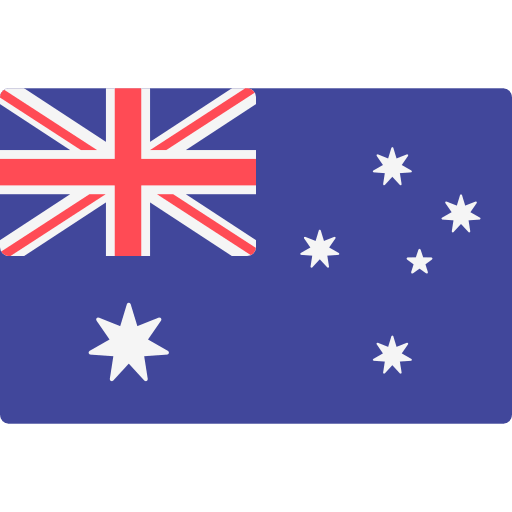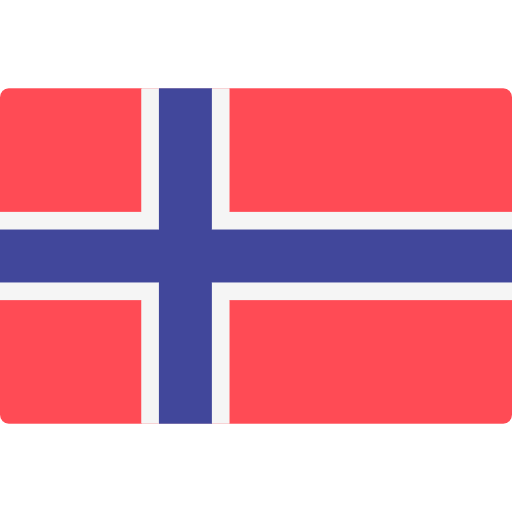Eurofins Toys & Hardlines Monthly Bulletin (May 2025)


Another step towards new toy safety rules
On 10 April 2025, the European Parliament and Council reached a provisional agreement on new EU toy safety rules. The deal strengthens the role of economic operators in improving toy safety as an extension of the list of prohibited substances such as PFAS, endocrine disruptors and bisphenols in toys, and clarifies requirements for safety warnings, safety assessments and the digital product passport (DPP).
The Council is now expected to adopt this agreement formally, and Parliament will then have to endorse the text in plenary, in the second reading.
Remember that the European Commission notified the Commission of a proposal for a Regulation on Toy Safety from 28 July 2023.
The political agreement is now subject to formal approval by the European Parliament and the Council. It will enter into force after 20 days following its publication in the Official Journal.
For more information, please refer to the European Commission website here.
Imports of candles, tapers and the like from China are subject to registration
On 21 March 2025, the European Commission published the Implementing Regulation (EU) 2025/511, which applies to candles, tapers, and the like with CN code 3406 00 00.
The Commission has decided to make imports of these products subject to registration after complaints were lodged on 4 November 2024 by Union producers of candles, tapers, and similar products.
The customs authorities are hereby directed to take the appropriate steps to register imports into the Union of these products that originate in the People’s Republic of China. Registration shall expire nine months following the date of entry into force of this Regulation, which is on 22 March 2025.
Simplified process in the implementation of EUDR
On 15 April 2025, the European Commission updated its Guidance Document and FAQs on Regulation (EU) 2023/1115 on deforestation-free products (EUDR). With these updates, the European Commission simplifies and reduces the administrative burdens and facilitates the implementation of the Regulation.
The main simplification measures introduced are:
- Large companies can reuse existing due diligence statements when goods previously on the EU market are reimported. This means that less information needs to be submitted in the IT system;
- An authorised representative can now submit a due diligence statement on behalf of members of company groups;
- Companies will be allowed to submit due diligence statements annually instead of for every shipment or batch placed on the EU market;
- Clarification of ‘ascertaining' that due diligence has been carried out, so that large companies downstream benefit from simplified obligations.
The simplifications introduced will be further complemented by a Delegated Act, which is now under public consultation until 13 May, and will be amended to clarify what products fall within the scope. Certain entries in Annex I could give rise to ambiguity as to whether waste, second-hand and used products fall within the scope, thus discouraging circular and resource-efficient practices.
For more information, please refer to the European Commission website about EUDR here.
The 2025-2030 working plan for the Ecodesign and energy labelling of consumer products
On 16 April 2025, the European Commission adopted the 2025-2030 working plan for the Ecodesign for Sustainable Products Regulation (ESPR) and Energy Labelling Regulation.
The plan indicates that steel and aluminium, textiles (with a focus on apparel), furniture, tyres and mattresses will be priority products over the next five years. The two main future requirements will be:
- Product performance, such as minimum durability, minimum energy and resource-efficiency, availability of spare parts or minimum recycled content;
- Product information, including key product features such as the product’s carbon and environmental footprint. Product information will mainly be made available via the Digital Product Passport or, for products with energy labels, via the European Product Registry for Energy Labelling (EPREL).
Ecodesign and energy labelling requirements will be set via delegated acts on a product-by-product basis or for groups of similar products.
Regarding some energy-related products, ongoing work under the Ecodesign Directive should continue, and relevant requirements will be adopted no later than 31 December 2026.
European initiatives to boost sustainable products
Below is a summary table with the status of current European initiatives related to consumer products and their sustainability:
|
Published initiative |
Status |
|
Sustainable products - disclosure of information on unsold consumer products This initiative will specify:
|
In preparation |
|
New product priorities for Ecodesign for Sustainable Products The Commission seeks views on the categories of new products and measures to address first, so that it can set priorities transparently and inclusively. |
Adopted by the European Commission on 16 April 2025 |
|
Digital Product Passport – rules for service providers The Commission opened public consultation with the aim of gathering stakeholders' views on how data should be stored and managed by service providers and on the need for a certification scheme for such service providers. The feedback gathered through the public consultation will inform the development of the effective functioning of the Digital Product Passport system. |
In public consultation until 1 July 2025 |
On 16 April 2025, the European Commission adopted the 2025-2030 working plan for the Ecodesign for Sustainable Products Regulation (ESPR) and Energy Labelling Regulation.
New requirements for the EPR sector of batteries and electrical and electronic products
On 13 April 2025, the French Minister of Ecological Transition published several orders on specifications for environmental organisations, individual systems, and coordinating bodies for the extended producer responsibility sector for batteries and electrical and electronic products. The main orders are:
- Order of 27 March 2025, Text No. 30, which establishes the specifications for producers of portable batteries, starters, lighting, and ignition batteries (SLI batteries), batteries for light transport vehicles (MTL batteries), electric vehicle batteries, and industrial batteries.
- Order of 27 March 2025, Text No. 31, which modifies the specifications applicable to approved eco-organisations in the extended producer responsibility (EPR) sector for electrical and electronic equipment (EEE). It introduces new obligations aimed at reducing fire risks in electrical and electronic equipment management facilities. In this context, it specifically introduces an obligation for eco-organisations to finance the removal of portable and MTL batteries incorporated into EEE for conservation purposes in treatment plants. Finally, it introduces the possibility for producers to benefit from the reduction mechanism provided for in Article R. 541-120 of the Environmental Code.
The provisions of both decrees take effect on 18 August 2025.
New persistent organic pollutant substances in the UK
On 11 March 2025, the UK POPs Regulation was amended by the Persistent Organic Pollutants (Amendment) Regulations 2025 (S.I. 2025/296) and The Persistent Organic Pollutants (Amendment) (No. 2) Regulations 2025 (S.I. 2025/297). These regulations amend provisions in Annexe 1 to the UK POPs Regulation as follows:
- Adding Dechlorane Plus and UV-328
- Adding Methoxychlor (already included in the EU POP Regulation and aligned with it)
- Amending the entries for Hexachlorobenzene, Pentachlorophenol and Perfluorooctanoic acid (aligned with EU POP Regulation)
This follows the decision made at the eleventh meeting of the Conference of the Parties to the Stockholm Convention in May 2023, where Dechlorane Plus and UV-328 were added in Annex A to the Convention with certain specific exemptions.
The amendments entered into force on 1 April 2025.
The requirements for Dechlorane Plus and UV-328 under the UK POP Regulation are as follows:
|
Substance |
UK requirements under Annexe I of UK POP Regulation (*) |
Some common uses |
|
UV-328 2-(2H-benzotriazol-2-yl)-4,6-ditertpentylphenol CAS No 25973-55-1 EC No 247-384-8 |
≤ 10 mg/kg (0.001% by weight) in substances, mixtures, or articles.
|
UV absorber used in paints, coatings, sealants, printing inks, adhesives, resins, plastics, and vehicles. |
|
Dechlorane plus includes its syn-isomer and anti-isomer CAS No 13560-89-9 135821-03-3 135821-74-8 EC No 236-948-9 |
≤ 10 mg/kg (0.001% by weight) in substances, mixtures or articles.
|
Polychlorinated flame retardants used in plastic products, textiles, adhesives, cables, motor vehicles, medical devices, E&E equipment, electronic devices, machinery, aerospace and defence. |
(*) Allowed uses/exemptions not included in this table.
As of now, Dechlorane Plus and UV-328 are not included in EU POP Regulation yet. In the EU, the European Commission held public consultations on these substances regarding whether to add them to Annex I of Regulation (EU) 2019/1021. The public consultations are closed, and it is expected that the Commission will adopt them soon.
New exclusions in the UK Furniture and Furnishings (Fire) (Safety) Regulations
On 30 April 2025, The Furniture and Furnishings (Fire) (Safety) (Amendment) Regulations 2025 was published. These regulations amend the Furniture and Furnishings (Fire) (Safety) Regulations 1988 (“the 1988 Regulations”). The main amendments are:
- It sets out a list of baby and children’s products to be excluded from the scope of the Furniture and Furnishings (Fire) (Safety) Regulations 1988;
- Removing the requirements about a display label, both at the initial point of sale and in the secondhand market;
- It extends the time limit for instituting legal proceedings from six months to twelve months.
The amendment will enter into force on 30 October 2025.
For more information, please refer to the statutory guidance on the UK Office for Product Safety and Standards website here.
Utah repeals online labelling requirement for bedding, upholstered furniture and quilted clothing
The State of Utah amended the Bedding, Upholstered Furniture, and Quilted Clothing Rule, R70-101, by removing the requirement for law labels to be accessible to consumers online. Effective April 9, 2025, digital law labels will no longer be required for bedding, upholstered furniture, and quilted clothing sold in Utah.
New Mexico regulates PFAS in consumer products
On 8 April 2025, the State of New Mexico passed HB 212 into law to regulate Per- and Poly-Fluoroalkyl Substances (PFAS) in various consumer products with different enforcement dates. PFAS is defined as any substance in a class of fluorinated organic chemicals containing at least one fully fluorinated carbon atom.
Here is a summary of the new requirements:
|
Chemical(s) |
Scope |
Requirement |
Effective Date |
|
PFAS |
Cookware Food packaging Dental floss Juvenile products Firefighting foam |
Intentionally added PFAS prohibited |
1 January 2027 |
|
All products |
Reporting if intentionally added PFAS |
1 January 2027 |
|
|
Carpets/rugs Cleaning products Cosmetics Fabric treatments Feminine hygiene products Textiles Textile furnishings Ski wax Upholstered furniture |
Intentionally added PFAS prohibited |
1 January 2028 |
|
|
All products |
Prohibited if requested testing by DOE demonstrates the product contains intentionally added PFAS and the manufacturer has failed to provide reporting information |
1 January 2028 |
|
|
All products |
Intentionally added PFAS prohibited, unless the manufacturer has fulfilled reporting requirement |
1 January 2028 |
|
|
All products |
Intentionally added PFAS prohibited |
1 January 2032 |
India revises FCM regulation to allow recycled PET
On 28 March 2025, India approved the Food Safety and Standards (Packaging) First Amendment Regulations 2025 to amend the Food Safety and Standards (Packaging) Regulations, 2018. The Amendment was issued to allow the use of recycled polyethylene terephthalate (PET) materials in packaging, storing, carrying, or dispensing food products, and when standards and guidelines are notified by the Food Authority and such packaging materials comply with national standards or regulations as applicable to such materials. The Amendment became effective on 28 March 2025.
Mandatory regulation on paper and paperboard for food packaging
On 10 April 2025, Indonesia notifies to WTO of a Draft Decree “Regulation No.6, 2025” of the Minister of Industry on Mandatory Implementation of Indonesian National Standard (SNI 8218) for Paper and Paperboard for Food Packaging.
This regulation will come into force on and after 24 July 2025 and repeals the previous Ministry Regulation No. 20 of 2020 concerning the mandatory implementation of SNI for paper and cardboard used in food packaging.
This Regulation covers the issuance of the SNI certificate using the type 5 certification scheme, production process assessment and implementation of ISO 9001:2015:
- Certification verification by a designated Product Certification Body (LSPro), and
- Conformity testing is conducted by accredited laboratories, either in Indonesia or overseas.
All covered products must bear the SNI mark and electronic mark. Use of the SNI mark requires prior approval, obtained through the issuance of a Certificate for the Use of the SNI Mark (SNI SPPT).
Covered products quality testing based on: SNI 8218:2024 for paper and paperboard as raw materials for the manufacture of primary packaging for food:
|
No. |
Product type |
HS code |
|
8 |
Glazed paper |
ex 4806.40.00 ex 4806.30.00 |
|
8 |
Oil-resistant paper and cardboard |
ex. 4806.20.00 |
|
8 |
Coated paper |
ex 4810.31.90 |
|
8 |
Coated cardboard |
ex 4810.13.99 ex 4810.14.99 ex 4810.19.90 ex 4810.29.99 ex 4810.32.90 ex 4810.99.90 |
|
8 |
Duplex cardboard |
ex 4805.92.10 ex. 4805.93.10 ex. 4810.92.90 |
| 8 |
Other paper and medium |
ex. 4804.11.00 ex. 4804.21.90 ex. 4804.31.90 4804.39.20 ex. 4804.41.90 4804.49.10 ex. 4804.51.90 4804.59.10 ex. 4805.24.00 ex. 4805.25.10 ex. 4805.25.90 ex. 4805.92.90 ex. 4805.93.90 |
|
8 |
Base paper for plastic laminated wrapping paper |
ex. 4804.11.00 ex. 4804.21.90 ex. 4804.31.90 ex. 4805.91.90 |
|
8 |
Paper other than in No.1 to No. 7 |
ex. 4804.19.00 ex. 4804.29.90 4804.39.20 ex. 4804.39.90 4804.42.10 4804.49.10 4804.52.10 4804.59.10 ex. 4805.19.10 ex. 4805.19.90 ex 4806.10.00 ex. 4810.13.99 |
Following the SNI 8218 standard, the testing includes assessments of physical properties, heavy metal content, formaldehyde, pentachlorophenol, total migration, and phthalate migration.
By meeting these stringent requirements, paper and carton packaging for food offers safe, reliable, and eco-friendly solutions, contributing to consumer health and sustainability in food packaging.
POPs substances prohibited in the HSNO Act Schedules 1AA and 2A
In March 2025, New Zealand issued the Hazardous Substances and New Organisms (Schedules 1AA and 2A) Order 2025 (the Order) to add these three POP chemicals to Schedule 1AA ‘Stockholm Convention on POP’ and Schedule 2A ‘POP’ of the HSNO (version as at 5 April 2025).
Details of the Order are summarised as follows:
|
Substance |
Activity |
Requirements |
Specific exemptions |
Effective date |
|
Dechlorane Plus, including its syn- and anti-isomer
CAS No: 13560-89-9 “Dechlorane Plus” includes its syn-isomer (CAS No: 135821-03-3) and its anti-isomer (CAS No: 135821-74-8)
|
Production |
Prohibited (as substances, in mixtures or articles) |
None |
14 March 2025 |
|
Use |
In accordance with part XI of this Annexe:
|
|||
|
Methoxychlor
“Methoxychlor” refers to any possible isomer of dimethoxydiphenyltrichloroethane or any combination thereof. For example: CAS No: 72-43-5; CAS No: 30667-99-3; CAS No: 76733-77-2; CAS No: 255065-25-9; CAS No: 255065-26-0; CAS No: 59424-81-6; CAS No: 1348358-72-4.
|
Production |
Prohibited (as substances, in mixtures or articles) |
None |
14 March 2025 |
| Use |
None |
|||
|
UV-328
CAS No: 25973-55-1 |
Production |
Prohibited (as substances, in mixtures or articles) |
As allowed for the Parties listed in the Register in accordance with the provisions of part XII of this Annex |
14 March 2025 |
|
Use |
In accordance with part XII of this Annexe:
|
With these additions’ requirements, substances, mixtures or articles containing those chemicals for import, manufacture, use, and storage are prohibited in New Zealand, except for exemptions specified in Schedule 2A under Section 25 of the Act.
Regulatory proposals notified to the WTO
The table below summarises the most recent notifications made to the World Trade Organization (WTO) (non-exhaustive):
|
Notification number |
Entity |
Title |
|
Servicio Ecuatoriano de Normalización, INEN (Ecuadorian Standardization Service) |
Draft first revision (1R) of Ecuadorian Technical Regulation PRTE INEN No. 275 "Ball point pens and refills"
The aim is the Prevention of deceptive practices and consumer protection as concerns ballpoint pens and refills. The Technical Regulation does not apply to:
|
Below you will find a monthly summary of product recalls and alerts in Europe (Source “Safety Gate (RAPEX)”) and the U.S. (Source “CPSC”).
Safety Gate (RAPEX) (European Commission Rapid Alert System for dangerous non-food products – Alerts reported by EU national authorities).
The following 81 alerts regarding toys, childcare articles, and children's equipment products were reported between week 12 and week 15 of 2025.
|
Type of Risk |
Number of alerts |
Notes |
|
|
1 |
Fancy-dress costume The costume is highly flammable, and the flame propagation is too high on the white textile of the dress. The migration of chromium VI from the toy's plastic eye is too high. Moreover, the migration of lead from the surface material is too high.
The product does not comply with the requirements of the Toy Safety Directive or EN 71-2 and 71-3. |
|
Burns, Chemical, Choking |
1 |
Fancy-dress costume The battery compartment can be easily opened, leaving the button batteries accessible. A child may put them in their mouth and swallow them. Moreover, the tulle skirt is highly flammable, and the flame propagation is too high.
The product does not comply with the requirements of the Toy Safety Directive, EN 62115, or EN 71-2. |
|
Chemicals |
1 |
Highlighter pens The plastic material of the cupcake caps an excessive concentration of bis(2-ethylhexyl) phthalate (DEHP) and diisooctyl phthalate (DIOP).
The product does not comply with the REACH Regulation. |
|
1 |
Drone The plastic material of the USB cable has an excessive concentration of bis(2-ethylhexyl) phthalate (DEHP), diisobutyl phthalate (DIBP), dibutyl phthalate (DBP) and di-‘isononyl’ phthalate (DINP).
The product does not comply with the requirements of the Toy Safety Directive or the REACH Regulation. |
|
|
1 |
Fancy dress costume The migration of chromium VI from the costume is too high.
The product does not comply with the Toy Safety Directive, EN 71-3, or EN 71-1. |
|
|
1 |
Finger paint The migration of aluminium from the toy is too high.
The product does not comply with the Toy Safety Directive or EN 71-3. |
|
|
1 |
Fancy dress costume The migration of chromium VI and lead from the costume is too high. The product does not comply with the requirements of the Toy Safety Directive or the REACH Regulation. |
|
|
2 |
Jumping rope The toy contains an excessive amount of bis (2-ethylhexyl) phthalate (DEHP), diisobutyl phthalate (DIBP) and dibutyl phthalate (DBP). The product does not comply with the REACH Regulation. |
|
|
1 |
Plastic ball The plastic material of the plastic ball has an excessive concentration of bis(2-ethylhexyl) phthalate (DEHP). The product does not comply with the REACH Regulation. |
|
|
1 |
Plastic ball The migration of lead from the toy is too high. Moreover, the plastic material of the plastic balls has an excessive concentration of bis(2-ethylhexyl) phthalate (DEHP). The product does not comply with the requirements of the Toy Safety Directive, the REACH Regulation, or EN 71-3. |
|
|
1 |
Remote-controlled toy car The plastic material of the USB cable has excessive concentrations of bis(2-ethylhexyl) phthalate (DEHP) and dibutyl phthalate (DBP). The product does not comply with the REACH Regulation or the Toy Safety Directive. |
|
|
1 |
Bath toy The plastic material of the product has an excessive concentration of bis(2-ethylhexyl) phthalate (DEHP).
The product does not comply with the REACH Regulation. |
|
|
1 |
Balloons The rubber of the balloons releases an excessive amount of nitrosatable substances (NDMA) and nitrosamines.
The product does not comply with the requirements of the Toy Safety Directive or EN 71-12. |
|
|
1 |
Plastic doll The doll has an excessive concentration of bis(2-ethylhexyl) phthalate (DEHP).
The product does not comply with the REACH Regulation. |
|
|
1 |
Toy tattoo kit The tattoo transfers contain diethylene glycol monobutyl ether (DEGBE). Moreover, the body paints contain benzophenone.
The product does not comply with the Cosmetic Products Regulation or the Toy Safety Directive. |
|
|
1 |
Jump rope The toy contains an excessive amount of diisobutyl phthalate (DIBP).
The product does not comply with the REACH Regulation. |
|
|
5 |
Toy slime The migration of boron from the toy slime is too high.
The product does not comply with the requirements of the Toy Safety Directive or EN 71-3. |
|
|
Chemical, Choking |
1 |
Toy telephone The product has small parts which may easily detach (left rear wheel). Moreover, the battery compartment can be easily opened, leaving the button batteries accessible.
The product does not comply with the requirements of the Toy Safety Directive or EN 62115. |
|
1 |
Pen The button batteries are easily accessible.
The product does not comply with the requirements of the Toy Safety Directive or EN 62115. |
|
|
1 |
Flying ball toy The button batteries are easily accessible.
The product does not comply with the requirements of the Toy Safety Directive or EN 62115. |
|
|
Chemical, Choking, Suffocation |
1 |
Veterinarian play set The plastic material of the product has an excessive concentration of di-‘isononyl’ phthalate (DINP). Moreover, the plush toy dog has small parts (eyes and nose) which can easily detach. The product does not comply with the Toy Safety Directive, the REACH Regulation, or EN 71-1. |
|
Chemical, Environment |
1 |
Toy car According to the product markings, the product has batteries containing cadmium. The product does not comply with the Batteries and Accumulators Directive. |
|
Choking |
1 |
Puzzle mat The toy has small parts which can easily detach. The product does not comply with the Toy Safety Directive or EN 71. |
|
1 |
Musical toy The toy has small parts which may easily detach. The product does not comply with the Toy Safety Directive or EN 71-1. |
|
|
1 |
Set of toy musical instruments The maracas have a protruding part. The product does not comply with the Toy Safety Directive or EN 71-1. |
|
|
1 |
Toy train The product has small parts which may easily detach. The product does not comply with the Toy Safety Directive or EN 71-1. |
|
|
1 |
Bath toy The toy has small parts which can detach, and toys that can break, releasing small parts. The product does not comply with the Toy Safety Directive or EN 71-1. |
|
|
2 |
Key rings The small parts of the product may easily become detached. The product does not comply with the Toy Safety Directive or EN 71-1. |
|
|
3 |
Soft toy The toy has small parts which may be easily detached from the toy. The product does not comply with the Toy Safety Directive. |
|
|
1 |
Plastic toy The toy can break easily and generate small parts. The product does not comply with the Toy Safety Directive or EN 71-1. |
|
|
1 |
Bouncing ball A child under 36 months could bite off small pieces of the product and swallow them. The product does not comply with the Toy Safety Directive or EN 71-1. |
|
|
2 |
Soft toy The fibrous stuffing material of the toy is easily accessible due to the weakness of certain seams, and it has small parts. The product does not comply with the Toy Safety Directive or EN 71-1. |
|
|
2 |
Shooter The product has small parts which may easily detach. The product does not comply with the General Product Safety Regulation, EN 1400, or EN 12586. |
|
|
4 |
Soother holder The beads of the soother holder do not have the required ventilation holes and can be loosened. Furthermore, the garment fastener of the soother holder is protruding. The product does not comply with the General Product Safety Regulation, EN 12586, or 71-1. |
|
|
1 |
Toy chicken It has small parts that can easily detach. The product does not comply with the Toy Safety Directive or EN 71-1. |
|
|
1 |
Wooden puzzle The toy has small parts which may easily detach. The product does not comply with the Toy Safety Directive or EN 71-1. |
|
|
1 |
Plush toy The fibrous stuffing material of the toy is easily accessible due to the weakness of the seams on the front legs. The product does not comply with the Toy Safety Directive or EN 71-1. |
|
|
Choking, Cuts |
1 |
Music toy set The cymbals on the tambourine can become loose and dislodged, along with the accompanying small metal pins intended to secure them in place, creating small parts. The product does not comply with the Toy Safety Directive or EN 71-1. |
|
Choking, Cuts, Strangulation |
1 |
Music toy set The various instruments can break easily and release small parts. Additionally, there are sharp edges at the toy's surface, which may cause cuts. Furthermore, one of the instruments (a toy drum) has a long cord that should be placed around the neck. The product does not comply with the Toy Safety Directive or EN 71-1. |
|
Choking, Injuries |
1 |
Plastic toy The toy has small parts (wings, chick, rear flap, metal axle, spring, wheels) which may easily detach. Furthermore, the shape and dimensions of the plastic eggs are inadequate. Moreover, the metal axis may become accessible, which may cause injuries. The product does not comply with the Toy Safety Directive or EN 71-1. |
|
1 |
Experimental toy set The product contains water beads. The beads can be put into the mouth and swallowed by children. As the beads expand, they can cause fatal occlusion of the respiratory tract or intestinal blockage. Moreover, the beads, if swallowed in hydrated form, may block a young child's airway. The product does not comply with the Toy Safety Directive or EN 71. |
|
|
Choking, Strangulation, Suffocation |
1 |
Soft toy The plastic of the packaging is too thin. Furthermore, the toy's electrical wires are too long and can become trapped during various activities of a child. Furthermore, the fibrous stuffing material of the toy is easily accessible due to the weakness of certain seams. The product does not comply with the Toy Safety Directive or EN 71-1. |
|
Choking, Suffocation |
1 |
Soft toy The plastic bag of the packaging is too thin. Moreover, the seams are defective, making the filling accessible. The product does not comply with the Toy Safety Directive or EN 71-1. |
|
1 |
Toy rattle set The rattles can break easily and release small parts. Moreover, the green rattle has protruding parts. In addition, the plastic of the packaging is too thin. The product does not comply with the Toy Safety Directive or EN 71-1. |
|
|
Cuts, Injuries, Suffocation |
1 |
Tricycle The sharp edges of the saddle stem can cause cuts. Moreover, inadequate distances between the moving parts of the wheels and frame can cause injuries in case of foot entrapment between moving parts. In addition, the plastic of the packaging is too thin. The product does not comply with the Toy Safety Directive or EN 71-1. |
|
Damage to sight |
1 |
Bouncing balls The LED light is too strong and not properly labelled. The product does not comply with the Toy Safety Directive or EN 62115. |
|
1 |
Toy torch The LED light is too strong and not properly labelled. The product does not comply with the Toy Safety Directive or EN 62115. |
|
|
Damage to sight, Injuries |
1 |
Plastic toy The toy can fire an unfolded projectile which has protruding parts. A projectile can hit a child's eye, causing injuries and damage to sight. The product does not comply with the Toy Safety Directive or EN 71-1. |
|
Environment |
1 |
Toy rattle The solders of the product have an excessive concentration of lead. The product does not comply with the Directive on the restriction of the use of certain hazardous substances in electrical and electronic equipment (RoHS 2 Directive). |
|
1 |
Headband The solders in the product have an excessive concentration of lead. The product does not comply with the Directive on the restriction of the use of certain hazardous substances in electrical and electronic equipment (RoHS 2 Directive). |
|
|
Injuries |
1 |
Highchair The highchair is unstable when the backrest is in the most reclined position. The product does not comply with the General Product Safety Regulation or EN 14988. |
|
1 |
Slide ramp The slide/ramp lacks a fixing mechanism and can come loose during use. The product does not comply with the Toy Safety Directive or EN 71-8. |
|
|
1 |
Climbing frame set The slide/ramp lacks a fixing mechanism and can come loose during use. The product does not comply with the Toy Safety Directive or EN 71-8. |
|
|
1 |
Mounting kit for baby hammock The material and diameter of the plug sold in the fixing kit are not suitable for the baby hammock. This can cause the plug to break under continuous tensile stress and vibration, resulting in the mount failing to support the hammock and causing the baby to fall. The product does not comply with the General Product Safety Regulation. |
|
|
1 |
Toy scooter The diameter of the wheels of the scooter is too small. Moreover, the steering tubes are not resistant to load and may collapse during a ride. The product does not comply with the Toy Safety Directive or EN 71-1. |
|
|
1 |
Children's rake The toy has unprotected protruding parts (teeth of the rake). The product does not comply with the Toy Safety Directive or EN 71-1. |
|
|
1 |
Magnetic toy set The toy contains small magnets with a high magnetic flux. The product does not comply with the Toy Safety Directive or EN 71-1. |
|
|
3 |
Children's bicycles The braking force of the bicycle’s brakes is inadequate. The handlebar can move about the steering fork. Moreover, the assembly of the handlebar and its stem can fracture. Additionally, the fork tube of the front fork can crack. Moreover, the saddle cover can separate from the wire base. The product does not comply with the General Product Safety Regulation, the Toy Safety Directive, or EN 71-1. |
|
|
Microbiological |
2 |
Soap bubble toy The soap-bubble solution of the toy is microbiologically contaminated. The product does not comply with the Toy Safety Directive. |
|
Strangulation |
2 |
Soother holder The product bears a too-long cord that can become trapped during various activities of a child. The product does not comply with the General Product Safety Regulation or EN 12586. |
|
1 |
Climbing frame The openings of the climbing frame are too large between the rugs, where a small child’s limb can pass but not his head. The product does not comply with the Toy Safety Directive or EN 71-1. |
|
|
1 |
Children’s fancy dress costume The product has long functional cords with free ends in the neck area. The product does not comply with the Toy Safety Directive, EN 71-1, or EN 14682. |
|
|
1 |
Fancy-dress costume The product has functional cords close to the neck area. The product does not comply with the Toy Safety Directive or EN 71-1. |
|
|
Suffocation |
1 |
Baby pillow The pillow is not firm enough. The product does not comply with the General Product Safety Regulation, EN 16890, or EN 1466. |
The following 16 alerts regarding jewellery were reported between week 12 and week 15 of 2025.
|
Type of Risk |
Number of alerts |
Notes |
|
|
1 |
Jewellery set The product has an excessive concentration of cadmium. The product does not comply with the REACH Regulation. |
|
1 |
Bracelet The product has an excessive concentration of cadmium. The product does not comply with the REACH Regulation. |
|
|
1 |
Slap bracelet set The plastic material of the product has an excessive concentration of bis(2-ethylhexyl) phthalate (DEHP) and di-‘isononyl’ phthalate (DINP). Additionally, the product has an excessive concentration of cadmium. Moreover, the product has an excessive concentration of lead. The product does not comply with the REACH Regulation. |
|
|
1 |
Scarf clip The product has an excessive concentration of cadmium. The product does not comply with the REACH Regulation. |
|
|
4 |
Necklace The product has an excessive concentration of cadmium and lead. The product does not comply with the REACH Regulation. |
|
|
1 |
Ring The product has an excessive concentration of cadmium. The product does not comply with the REACH Regulation. |
|
|
7 |
Earrings The rate of nickel release is too high, and there is an excessive concentration of lead and cadmium. The product does not comply with the REACH Regulation. |
The following 18 alerts regarding miscellaneous consumer products were reported between week 12 and week 15 of 2025.
|
Type of Risk |
Number of alerts |
Notes |
|
Burns, Electric shock, Fire |
1 |
Microwave kiln The stove can overheat, causing internal damage to the internal components and electrical circuits of a microwave oven. Moreover, there is a risk of heavy smoke and fire. The product does not comply with the General Product Safety Regulation. |
|
Chemical |
2 |
Neoprene suit The black rubber foam of the product has an excessive concentration of polycyclic aromatic hydrocarbons (PAHs), notably Chrysen (CHR). The product does not comply with the REACH Regulation. |
|
1 |
Car floor mats The plastic of the product has an excessive concentration of polycyclic aromatic hydrocarbons (PAHs), notably Benzo (a)pyrene (BaP), Benzo (e)pyrene (BeP), Dibenz(a,h)anthracen (DBAhA), Benzo (k)fluoranthene (BkFA) and Benzo (b)fluoranthene (BbFA). The product does not comply with the REACH Regulation. |
|
|
2 |
Bath mat The plastic material of the product has an excessive concentration of bis(2-ethylhexyl) phthalate (DEHP). The product does not comply with the REACH Regulation. |
|
|
1 |
Card holder The product has an excessive concentration of cadmium. The product does not comply with the REACH Regulation. |
|
|
2 |
Ball set The plastic material of the bat's grip has an excessive concentration of bis(2-ethylhexyl) phthalate (DEHP). The product does not comply with the REACH regulation. |
|
|
Damage to sight, Injuries |
1 |
Swim goggles The goggles’ resistance to compression is insufficient and can easily break, causing injuries to the user. Moreover, the transmission factor of UV light is too high. The product does not comply with the Personal Protective Equipment Regulation or EN 18527. |
|
Drowning |
1 |
Swimming pool The ladder cannot be automatically locked in an upright position as required for a security ladder. The labelling of the product misleads parents into believing they can leave their children unattended. The product does not comply with the General Product Safety Regulation. |
|
Health risk / other |
1 |
Smartwatch This watch falsely claims to measure blood-glucose levels. An incorrect measurement can lead to poor management of diabetes, which can pose health risks to people with that condition. The product does not comply with the General Product Safety Regulation. |
|
Injuries |
1 |
Bicycle carriers The plastic supports can crack if over-tightened. The product does not comply with the General Product Safety Regulation or EN 14682. |
|
5 |
Telescopic ladder The ladder may bend with repeated use, causing the user to fall from a height. The product does not comply with the General Product Safety Regulation. |
The following 1 alert regarding furniture was reported between week 12 and week 15 of 2025.
|
Type of Risk |
Number of alerts |
Notes |
|
Injuries |
1 |
Chair The chair is unstable. The product does not comply with the General Product Safety Regulation. |
RASFF (European Commission Rapid Alert System for Food and Feed - Alerts reported by EU national authorities)
The following 1 alert regarding Food Contact Materials related to children's tableware were reported from 21 March to 20 April 2025.
|
Product |
Notes |
|
|
Plate for infants and young children |
High level of volatile organic substances from silicone plate |
|
The Office for Product Safety Standards (OPSS) issues Product Safety Alerts for the UK market.
The following 18 alerts regarding toys, childcare articles and children's equipment products were reported between week 12 and week 15 of 2025.
|
Type of Risk |
Number of alerts |
Notes |
|
Asphyxiation |
1 |
Plush toy It has been identified that the limbs of the toy can become easily detached due to the weakness of the seams. As a result, the internal fibrous stuffing material is easily accessible. The products do not meet the requirements of the Toys (Safety) Regulations 2011. |
|
Chemical |
1 |
Rope skipping machine It has an excessive concentration of bis(2-ethylhexyl) phthalate (DEHP) and di-isobutyl phthalate (DIBP). The product does not meet the requirements of the Toys (Safety) Regulations 2011. |
|
Choking |
1 |
Stacking toy The drawstring bag containing the product has a plastic toggle closure that can be easily removed. The product also bears an age and small parts warning for children under 6 months, but the relevant legislation states that small parts are a potential hazard for children up to the age of 3 years. The product does not meet the requirements of the Toys (Safety) Regulations 2011. |
|
1 |
LED balloon light It contains small button batteries with insufficient labelling. As the products are designed to be inserted into a balloon, there is a greater likelihood that they may be ingested by consumers, particularly children. The product does not meet the requirements of the Toys (Safety) Regulations 2011. |
|
|
1 |
Sensory roller The potential release of a small piece of plastic lodged in the toy during the manufacturing process. If a young child accessed this small piece of plastic, they may put it in their mouth. The affected batch of the product does not meet the requirements of the Toys (Safety) Regulations 2011. |
|
|
1 |
Plush toys The eyes and noses detached at a force less than the required specification. All the detached components fit wholly inside the small parts cylinder and therefore pose a potential choking hazard to a child under 36 months. The products do not meet the requirements of the Toys (Safety) Regulations 2011. |
|
|
1 |
Wooden ball runner The top rung of the toy may detach, meaning that the small balls attached to the sides of the toy can become loose. The product does not meet the requirements of the Toys (Safety) Regulations 2011. |
|
|
1 |
Musical toy The product has small parts which may easily detach. Improvements are also required to the marking, labelling and documentation. The product does not meet the requirements of the Toys (Safety) Regulations 2011. |
|
|
1 |
Dinosaur toy It comes with a separate bone intended to be placed in the dinosaur’s mouth. As the product is not appropriately labelled, a child under 36 months may play with the toy, place this small part in their mouth. The product does not meet the requirements of the Toys (Safety) Regulations 2011.
|
|
|
Damage to hearing |
1 |
Key fob and mobile phone toy The sound level emitted from the phone is too loud. If the product is given to a child over the age of one to play with, and they place the smartphone to their ear whilst pressing the buttons to generate the audible sound, over time. The product does not meet the requirements of the Toys (Safety) Regulations 2011. |
|
Health |
1 |
Radio-controlled car The product contains Ni-Cd batteries, which are banned in toys. The product does not meet the requirements of the Toys (Safety) Regulations 2011. |
|
Injuries |
1 |
Children’s bicycle The stabilisers are larger than permitted under the relevant standard. As a result, the user may be insufficiently stable during use, causing them to fall. The product does not meet the requirements of the Toys (Safety) Regulations 2011. |
|
Injuries /asphyxiation |
1 |
Dinosaur scooter The height adjustment feature on the steering column includes two locking compartments that may fail to stop the column from dropping during use. This may therefore present a potential fall hazard to the user. The product also does not come with the appropriate instructions for use when folding and unfolding the scooter. The plastic bag containing the top part of the steering column could be placed fully over a young child’s head. The product does not meet the requirements of the Toys (Safety) Regulations 2011. |
|
Suffocation |
3 |
Baby sleeping bags The product has a hood, which is not permitted in the relevant standard, BS EN 16781:2018. If a baby is placed inside a hooded sleeping bag and left unattended, the baby’s natural movement may cause the hood to cover their head/face. The product does not meet the requirements of the General Product Safety Regulations 2005. |
|
2 |
Baby sleeping bag The product has no arm openings. This could lead to the suffocation of the baby if they slip down into the sleep bag while unattended and the garment covers their face. The product does not meet the requirements of the General Product Safety Regulations 2005. |
The following 1 alert regarding jewellery were reported between week 12 and week 15 of 2025.
|
Type of Risk |
Number of alerts |
Notes |
|
Chemicals |
1 |
Gold and silver jewellery They were found to contain excess concentrations of cadmium and nickel. The products do not meet the requirements of the Registration, Evaluation, Authorisation & Restriction of Chemicals (REACH) Enforcement Regulations 2008. |
The following 3 alerts regarding miscellaneous consumer products were reported between week 12 and week 15 of 2025.
|
Type of Risk |
Number of alerts |
Notes |
|
Burns |
1 |
Covered cup with straw They lack the appropriate instructions and warnings. The instructions provided indicate that the bubble tea should be made with hot water, but do not warn users that they should allow the drink to cool before drinking it. The products do not meet the General Product Safety Regulations 2005. |
|
Injuries |
1 |
Telescopic ladder It has insufficient strength. Under repeated use, the ladder could start to bend, causing the user to fall from a height. The product does not meet the General Product Safety Regulations 2005. |
|
Health |
1 |
Cast iron skillets and griddles The products present a health risk as testing has identified potential migration of heavy metal components during use of the product. The product does not meet the Materials and Articles in Contact with Food (England) Regulations 2012 or the General Product Safety Regulations 2005. |
From 3 April 2025 to 24 April 2025, the CPSC (Consumer Product Safety Commission) published the following recalls:
10 recalls regarding toys and childcare products
|
Hazard |
Number of alerts |
Notes |
|
Drowning |
2 |
Bath seats The recalled bath seats violate the federal safety regulation for infant bath seats, including requirements for stability and leg openings, and can tip over while in use, posing a risk of serious injury or death to babies due to a drowning hazard. |
|
Suffocation |
2 |
Highchairs The recalled highchairs pose a suffocation risk because they were marketed for infant sleep and have an incline angle greater than 10 degrees, in violation of the CPSC’s Infant Sleep Products Rule and the Safe Sleep for Babies Act. |
|
Swings The swings pose a suffocation risk because they were marketed for infant sleep, and they have an incline angle greater than 10 degrees, in violation of the Safe Sleep for Babies Act. In addition, the swings fail to meet mandatory warning requirements under the swing standard and are missing the required warnings and instructions for consumer products containing button cell and coin batteries under Reese’s Law. |
||
|
Choking |
3 |
Stroller toys The yolk of the toy egg can crack and create small parts, posing a choking hazard to young children. |
|
Tissue box toys The detachable tissue box toy can come apart, exposing the small support brackets, posing a choking hazard to young children. |
||
|
Car toys The recalled shape sorter car toys contain balls that violate regulations banning small parts in toys intended for children under three years of age because they are a choking hazard and can cause serious injury or death. |
||
|
Ingestion |
2 |
Magnetic toys The recalled magnetic Multifunctional Puzzle Crab Toy set violates the mandatory federal regulation for magnet toys, posing an ingestion hazard. When high-powered magnets are swallowed, the ingested magnets can attract each other or another metal object and become lodged in the digestive system. This can result in perforations, twisting and/or blockage of the intestines, infection, blood poisoning and death. |
|
Glowsticks The glow sticks and glasses violate the mandatory federal battery-operated toy regulation because the button cell batteries are in a compartment that can be opened easily without requiring the use of a common household tool. When button cell and coin batteries are swallowed, the ingested batteries can cause serious injuries, internal chemical burns, or death, posing an ingestion hazard to children. |
||
|
Injury |
1 |
Highchairs and stationary activity centres The recalled highchair activity centres violate the federal regulations for highchairs and stationary activity centres. The highchair activity centres pose a deadly entrapment hazard because the leg openings in the seat of the stationary activity centre are too wide, and a child can become entrapped in it, which is a violation of the federal regulation for stationary activity centres. In addition, the tray can disengage, and a child can fall, which is a violation of the federal regulation for highchairs, posing a serious injury hazard. |
11 recalls of consumer products
|
Type of Risk |
Number of alerts |
Notes |
|
Fire and burn |
2 |
Portable heaters The recalled portable heaters’ operating instructions can cause consumers to incorrectly depress the start button too quickly and prevent the fan from starting, causing the heaters to overheat, posing fire and burn hazards. |
|
Lights The power switch on the USB cord can overheat and melt, posing fire and burn hazards. |
||
|
Impact |
1 |
Window hinge tracks The metal sliding arm can disengage from the hinge track, causing the window sash to fall, posing an impact injury hazard to consumers. |
|
Laceration |
1 |
Blenders The blender’s blades can continue to operate when the bottle is not attached to the blender, posing a laceration hazard. |
|
Burn, fire and poisoning |
1 |
Fuel containers The portable fuel containers violate the child-resistant requirements for closures under the Children's Gasoline Burn Prevention Act. The closure for the product is not child-resistant, posing a risk of burn, fire and poisoning to children and the risk of serious injury and death. |
|
Tip-over and entrapment |
2 |
Dressers The recalled dressers are unstable if they are not anchored to the wall, posing serious tip-over and entrapment hazards that can result in injuries or death to children. The dressers violate the performance requirements of the STURDY Act. |
|
Tip-over restraint kits The plastic zip tie used with the recalled furniture tip kits can become brittle or break, which can allow a clothing storage unit that is anchored to the wall to detach during a furniture tip-over event, posing a tip-over and entrapment hazard that can result in death or serious injuries to children. |
||
|
Strangulation and entanglement |
3 |
Window shades The recalled roller shades have long operating cords that can cause death or serious injury to children due to strangulation and entanglement hazards. The window coverings violate the federal regulations for window coverings and present a substantial product hazard. The shades also violate labelling requirements for window coverings. |
|
Burn |
1 |
Butane torches The recalled butane torches violate the mandatory federal regulations for multipurpose lighters because they do not have the required child-resistant mechanisms, posing a risk of serious burn injuries or death to children. |















































